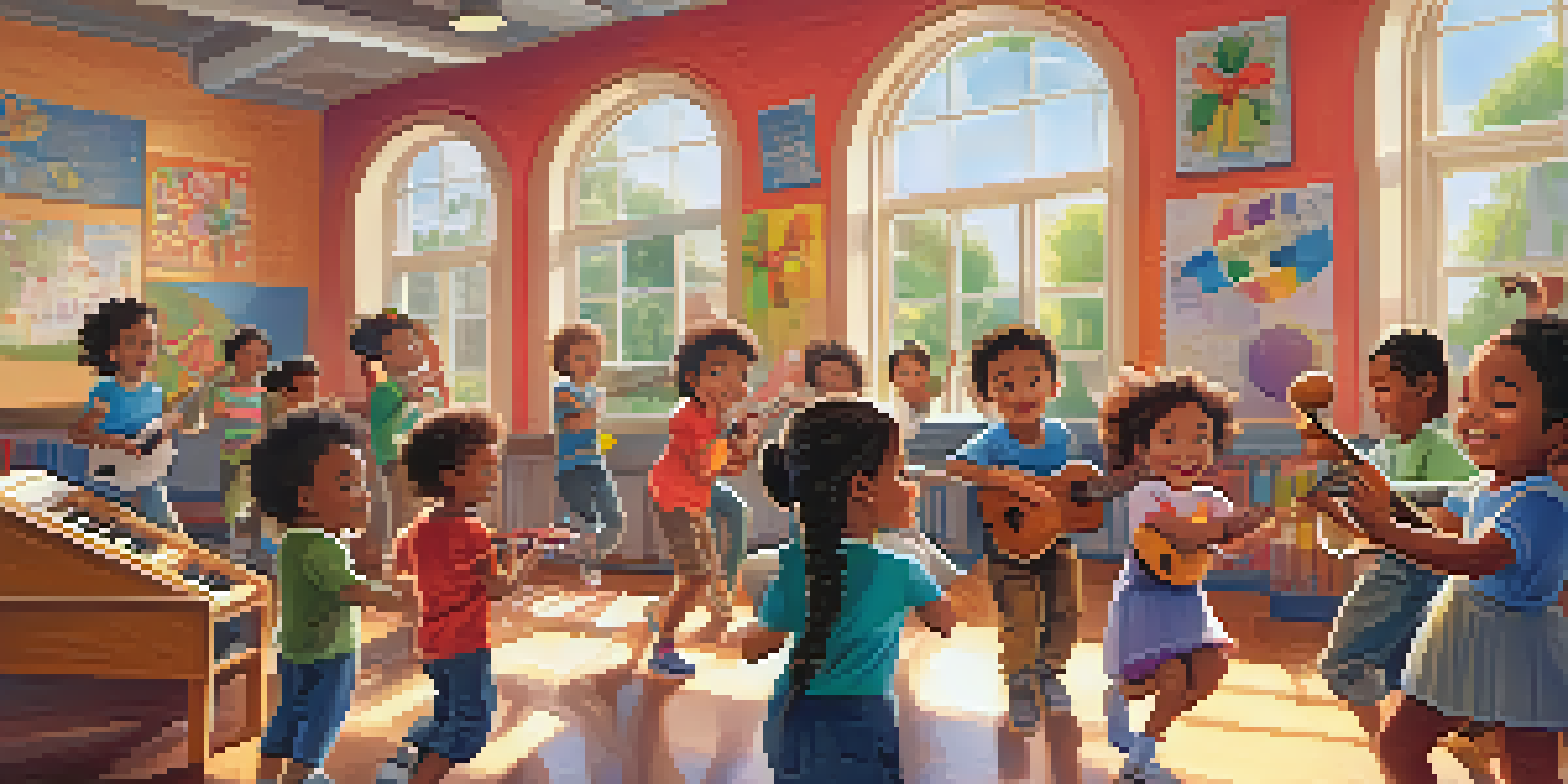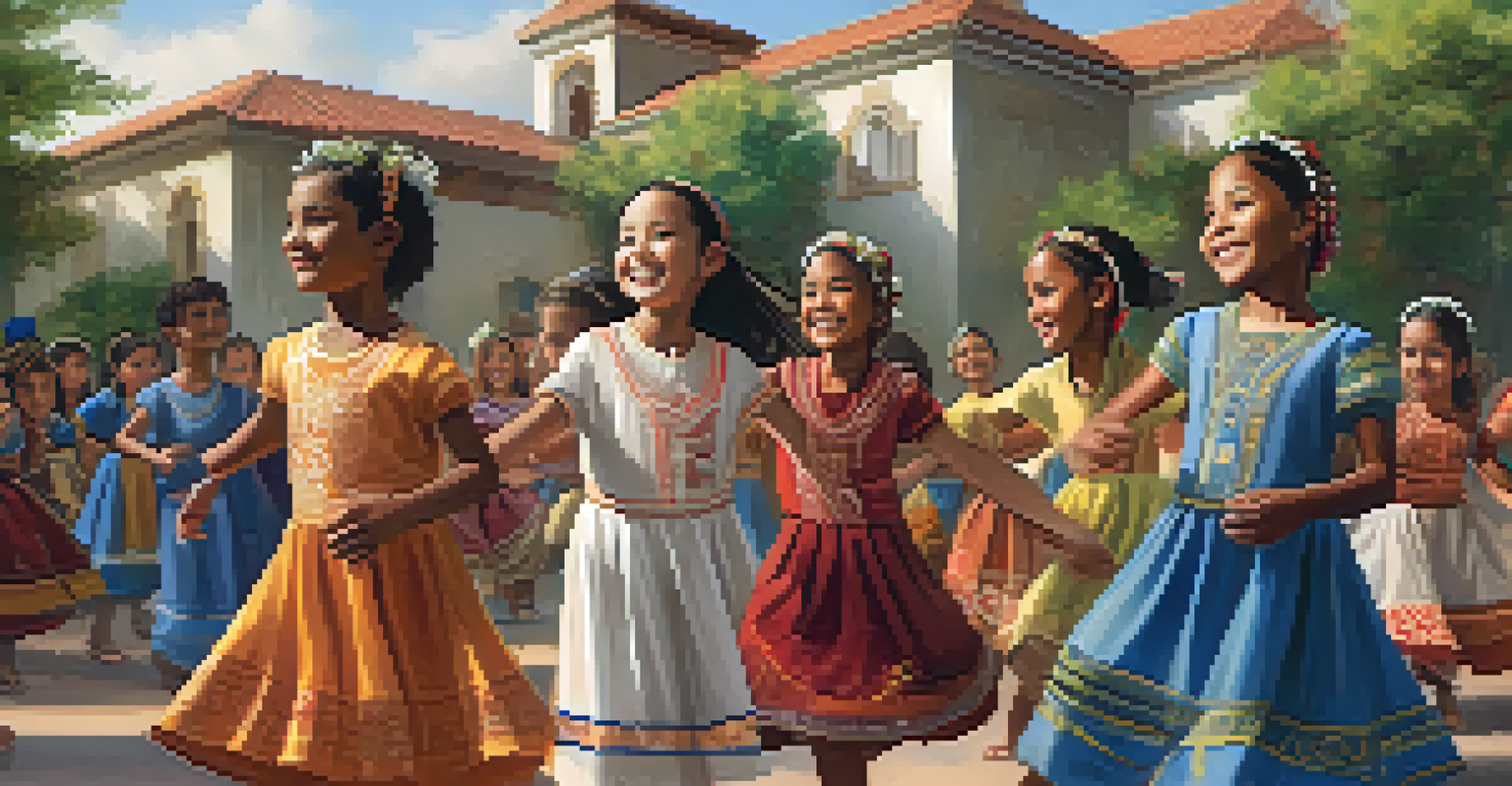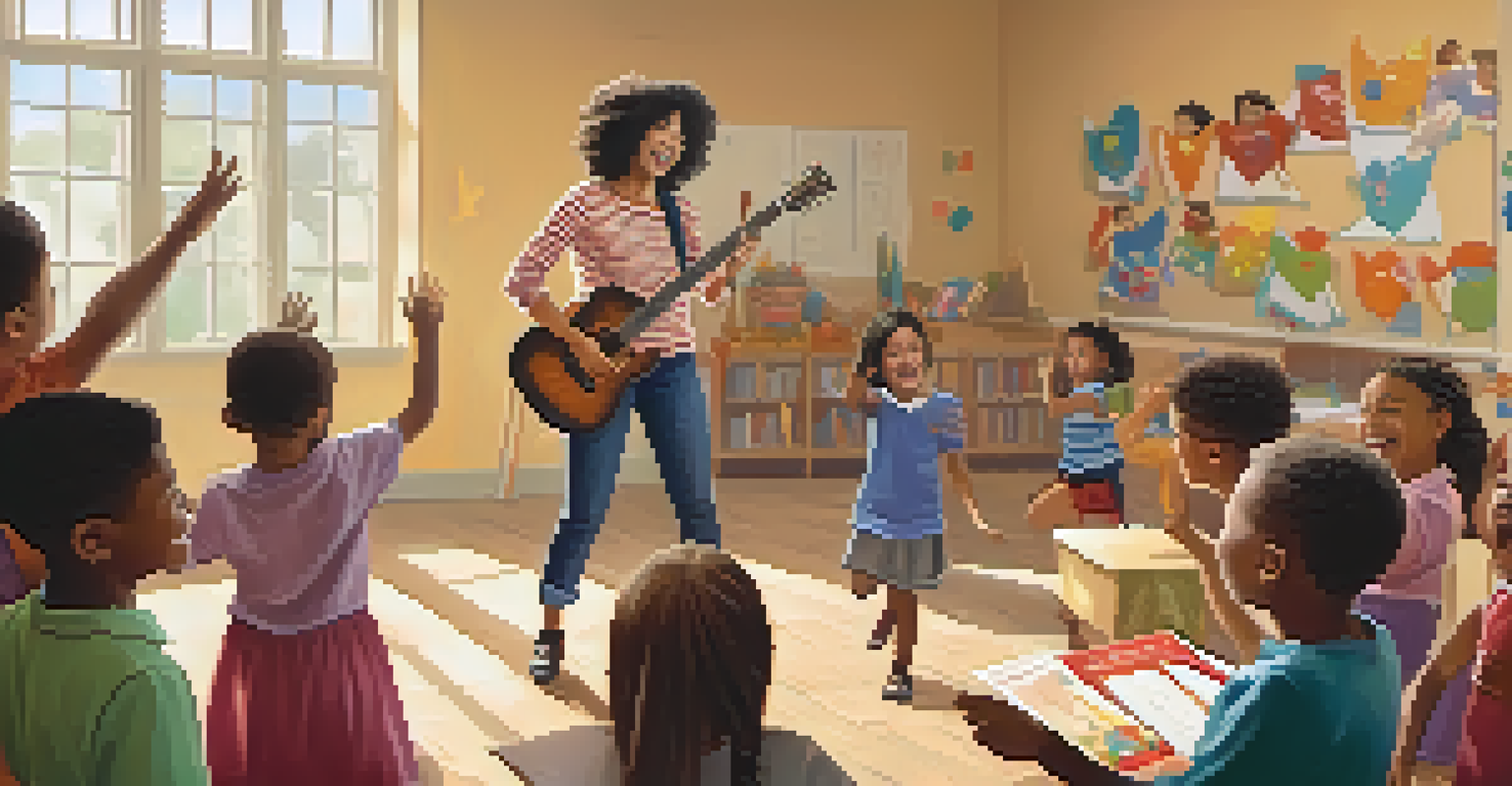Importance of Music and Movement in Early Education

Music and Movement Enhance Cognitive Development
Engaging children in music and movement promotes cognitive growth by stimulating various areas of the brain. When kids sing, dance, or play instruments, they improve their memory, attention, and problem-solving skills. For instance, learning a simple song can help with language acquisition, as they begin to recognize sounds and words in a fun context.
Music can change the world because it can change people.
Additionally, rhythm and movement activities help develop coordination and motor skills, which are crucial for young learners. When children clap, jump, or sway to music, they not only express themselves but also build physical abilities that support overall learning. This physical engagement lays a foundation for more complex tasks later on, like writing or sports.
Incorporating music into daily routines can also create a stimulating learning environment. For example, singing songs related to the lesson can make information more memorable and enjoyable, helping children connect concepts in a playful way. Overall, these activities intertwine learning with fun, making education a delightful experience.
Fostering Emotional and Social Skills Through Song
Music and movement are powerful tools for emotional expression and social interaction among young children. When kids dance together or sing in a group, they learn to share, take turns, and understand the feelings of others. This collaborative play fosters friendships and helps develop empathy, which is crucial for their emotional growth.

Moreover, music can evoke a wide range of emotions, allowing children to identify and express their feelings. For example, listening to a slow, calming melody might help soothe a child who is upset, teaching them how to navigate their emotions. This emotional literacy is vital as they grow and face various social situations.
Music Boosts Cognitive Skills
Engaging in music and movement enhances children's memory, attention, and problem-solving abilities.
Through group activities like circle dances or sing-alongs, children learn the importance of teamwork and communication. These shared experiences not only strengthen bonds but also build a sense of belonging, making every child feel valued and understood in their learning environment.
Creativity Flourishes in Musical Environments
Early education settings that incorporate music and movement foster creativity in children. When kids are exposed to different musical styles and dance forms, they begin to explore their own artistic expressions. This creative exploration is vital as it encourages innovative thinking, problem-solving, and the ability to view challenges from multiple perspectives.
Dance is the hidden language of the soul.
For example, allowing children to create their own songs or choreograph a dance encourages them to think outside the box. This process not only boosts their confidence but also nurtures their individuality. Children learn that their ideas matter, which can inspire future creative endeavors in various fields.
Additionally, music and movement activities often involve improvisation, allowing children to experiment and make spontaneous decisions. This kind of play is essential for cognitive flexibility, as it teaches children to adapt and embrace new ideas. Ultimately, a creative environment nurtured by music can lead to lifelong skills in various creative pursuits.
Building Language Skills Through Rhythm and Melody
Music is inherently linked to language development, making it an essential component of early education. Rhymes, songs, and chants introduce children to new vocabulary in an engaging way, helping them understand the sounds and rhythms of language. For instance, a catchy nursery rhyme can improve their phonemic awareness, which is crucial for reading skills.
Furthermore, singing along to songs allows children to practice articulation and pronunciation in a playful context. This repetition aids in reinforcing language patterns and enhances their ability to communicate effectively. As they learn new lyrics, they develop memory skills that are beneficial for overall learning.
Emotional Growth Through Music
Music fosters emotional expression and social interaction, helping children develop empathy and teamwork.
Incorporating storytelling with musical elements can further enhance language skills. For example, using songs to narrate a story helps children grasp the narrative structure while also making it memorable. This combination of music and storytelling enriches their linguistic abilities and sparks a love for literature.
Encouraging Physical Health Through Active Movement
Movement is crucial for children's physical health, and integrating music into physical activities makes it enjoyable. When children dance or engage in rhythmic movement, they develop their gross motor skills and improve cardiovascular fitness. This active engagement is essential for combating sedentary lifestyles, even at a young age.
Additionally, music can motivate children to be more active. Upbeat songs can inspire them to dance freely or participate in structured activities, such as a dance class or a movement game. This blend of fun and exercise helps instill a lifelong appreciation for physical activity.
Moreover, regular movement can positively impact children's mental health, reducing anxiety and enhancing mood. When children move to music, they release endorphins, which contribute to feelings of happiness. This connection between movement and emotional well-being is vital for creating a balanced and healthy lifestyle.
Cultural Awareness Through Diverse Musical Experiences
Introducing children to a variety of musical genres and cultural traditions fosters an appreciation for diversity. When kids listen to music from different cultures, they gain insights into the values, beliefs, and histories of others. This exposure broadens their understanding of the world around them, promoting respect and empathy.
For instance, learning dances from various cultures can spark curiosity about those communities, leading to discussions about traditions and customs. This kind of learning not only enriches their education but also encourages inclusivity and acceptance from a young age. Kids learn that while they may have different backgrounds, music can bring everyone together.
Cultural Awareness via Diverse Music
Exposure to varied musical genres promotes respect and understanding of different cultures among children.
Moreover, celebrating cultural events through music and dance can create a sense of community within the classroom. Participating in these activities helps children feel connected to their peers and fosters a sense of belonging. This shared experience is essential for nurturing a supportive and inclusive learning environment.
The Role of Educators in Implementing Music and Movement
Educators play a crucial role in integrating music and movement into early education curricula. By thoughtfully incorporating these elements into lessons, teachers can create an engaging and dynamic learning environment. For example, using songs to teach counting or rhythm games to reinforce patterns can make a significant difference in children's learning experiences.
Additionally, educators should be encouraged to embrace their creativity and share their musical interests with their students. When teachers participate in music and movement activities alongside children, it creates a sense of excitement and encourages participation. This modeling of enthusiasm can inspire children to explore music and movement further.

Professional development opportunities focused on music and movement can also help educators stay informed about effective practices. By equipping teachers with the tools and knowledge needed to implement these activities, we can ensure that all children benefit from the rich experiences that music and movement offer in their educational journey.